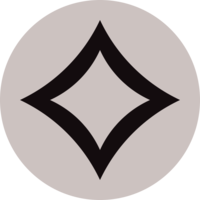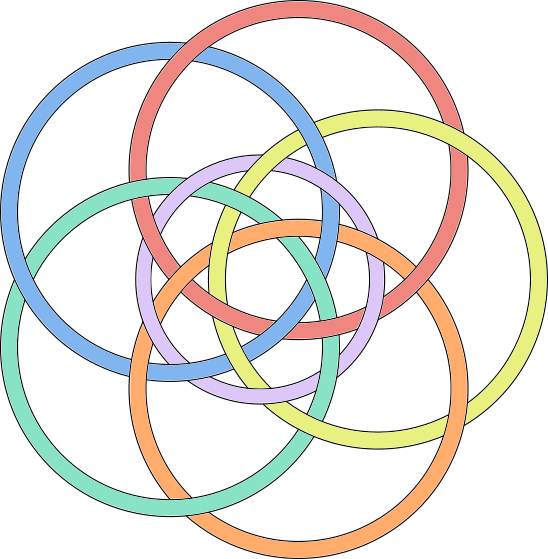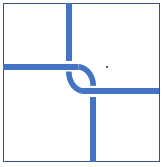The homepage of Dylan Holmes (original) (raw)
My doctoral dissertation, Computing moral hypotheticals. I built a computer system that understands moral hypotheticals such as self-defense or preventive harm, in much the same way we do. Here's a video recording of my thesis defense.
Programs that manipulate infinities
I wrote a program to manipulate infinite series, solve recurrences, and convert infinite sequences into finite closed form. A finite computer can wrangle infinities.
Algorithm design for time travelers
Exotic algorithms that compute using scifi time travel and stable time loops. Working examples included. Automatic Latin poetry analysis
A computer program that identifies poetic features of Latin poetry (such as alliteration, syllable counts, and caesurae) to help identify the Anglo-Saxon poets who wrote them.
I analyze the implicit pragmatic rules that constrain when it's appropriate to say that "X drove Y to Z". These rules hinge on concepts including "intended destination", "passenger sentience", and "transport beneficiary", showing just how surprisingly nuanced our language is.
All-resistant pokémon types: a ten-year progress report
I ask whether it is possible to find a combination of pokémon types that resists every type of attack, and if so, to enumerate all such combinations. The formalization of this problem introduces problems in linear cone optimization and pareto optimality. (December 2024)
(December 2024)
What do you compute in quantum mechanics class?
I propose an intro quantum mechanics course based on playing with smart, qualitative numerical simulations. You can ditch the nonphysical idealizations and instead focus on big messy physical problems—such as chemistry! The main advantage is compositionality: learning something new enables you to do combinatorially many new things.
A question-answering program capable of holding a conversation about what happened when. (Class project based on Longuet-Higgins's book Mental Processes.)
I explain, from first principles, how the sun moves through the sky and how it looks from different vantage points. Seasons, extremely tilted planets, Martian zodiacs, how sundials work, and more. Just the geometric consequences of orbiting on a spinning planet with a tilted axis—no physics.
Update: A sundial theorem
(Oct 2022)
Absurdist whimsical children's author Daniel Pinkwater has a podcast available as mp3 files on the internet. I converted it into this xml file so you can play it using podcast software. To subscribe, just point your podcast software at the url http://logical.ai/pinkwater.xml. (December 2024)
(December 2024)
Can you wrap rubber bands around a cube so that every face looks like the image shown here (or a rotation or reflection of it?). I write Clojure code to find out.
I derive the ideal gemstone shape based on physical principles. Along the way, I uncover connections between gemstones, mirrors, lasers, and glass.
My friends and I have developed a useful strategy for working together. Social queues provide short one-way conversations that enable you to tell someone else that you'd like to talk to them, without interrupting their focus if they're working hard on a problem.
By optimizing my walk home, I've discovered some beautiful graphs and an unexpected conclusion.
In this essay, I argue that online surveillance endangers our basic freedoms; a direct solution should target exploitative organizations, not the people who built the free-of-charge, communal Internet.
The hybrid numbers of microwave ovens
Microwave ovens measure time in strange and wonderful ways: you can type in three minutes as 3:00— but also as 2:60! In this article, I explore the properties of this number system and its relationship to another numbering system, binary coded decimal (BCD).
A mini-theory of choreography. Three constraints to help you design elegant choreography for games like Stepmania.
- [Map with initials](worklife/2021 week 35 aug/botw-map/output/map-nonunique.png)
- [Map with unique initials](worklife/2021 week 35 aug/botw-map/output/map-unique.png)
- [Map with full names](worklife/2021 week 35 aug/botw-map/output/map-names-3.png)
A map of all the shrines in Breath of the Wild. Using the elegant grid-based index, you can easily look up the location of any shrine by name. Find shrines you've missed.
Colorless green mana sleeps furiously 

The Magic: The Gathering card game has evolved its own English dialect, complete with new grammar. Here, I describe and codify some of the (implicit) rules.
I describe Kellogg's and Warmus's procedures for testing whether a function can be nomographed, and for constructing the nomogram if so.
Game-playing strategies for card games with luck manipulation.
Given some empirical data points, find the best-fit hyperbola/parabola/ellipse passing through them. Includes Python code.
A few unsorted, miscellaneous little ideas or results. Updated occasionally.
Write in an alien language using Loren's circular alphabet. Pre-alpha proof of concept.
SI units and (pre)fixed points
A cubic meter is larger than a liter, but a cubic millimeter is smaller than a milliliter. Changing the prefix changes which is larger— can you find the prefix that makes them equal?
This fixed-verse poetic form, invented in the 12th century, has beautiful hidden symmetry. I depict the symmetry several ways and generalize it, defining a family of new poetic forms.
My optimized design for a weight-plate loading app. No typing of any kind. Unified interface for assembling a target weight, visually looking up an arrangement of plates, and converting between pounds and kilograms. (Designed for smartphones.)
Paint, moondust, and electrons
A visualization of how material and lighting can affect brightness. (A four-variable oriented nomogram with transparency.)
Klein bottle folding instructions
Ambiguous drawings like this Escher staircase or this elephant employ surfaces and lines that you interpret differently depending on where you're looking.
I found a way to depict a four-dimensional Klein bottle using a similar ambiguous technique. Here, you can see the neck of the bottle bypass the inner surface without piercing it — an impossible feat in three dimensions.
To solve a puzzle about a conversation, I converted the conversation into an interpretable program. When you describe a problem in this new puzzle-language, the resulting code looks like a natural language conversation and, when run, will find the solution.
How would you experimentally determine the Pokémon type chart if you didn't already know the types and their interaction strengths?
pokémon, ai
Solving a subletting problem with an elegant payment protocol.
Polyhedra in knots  Crossing strategies
Crossing strategies
A well-known puzzle asks for a least-time strategy for a group of people to cross a bridge in pairs with a flashlight. With a combination of search and some astonishing computer-automated algebra, we can get insight into the general case.
Edit: I found a closed-form solution. Regardless of who's crossing the river, an optimal solution is to send the two slowest people across the river, either escorted by the fastest person, or in a "one-two ratchet" (the two fastest people cross, then the fastest returns, then the two slowest people cross, then the second-fastest person returns), whichever strategy is faster. This is always optimal. [writeup]
This script explains medical terms by breaking apart their etymological roots. It translates Latin-based jargon into familiar words that anyone can understand.
I use a variety of conceptual, programming, and mathematical tools to investigate a card game puzzle.
Parsing Latin poetry using constraint satisfaction
In Latin poetry, the length of each syllable is determined using rules regarding nearby letters and accent marks on the vowels. This program allows you to input Latin poetry without accent marks; it then intelligently guesses the accent marks by assuming that the poetry follows a specific metrical form known as dactylic hexameter.latin, programming
A lightning-fast tool for looking up Latin verb endings. You can type any combination of English (“we will/should have been -ed”) or grammatical terms (“3i subjunctive passive”) to get a tailor-made table of relevant verb endings.
latin, programming
Parables about life and identity. Updates some Fridays.
Short essays on life and death
A collection of short essays outlining some moral issues concerning life and death and what we can do about them today.
A cultivated collection of songs that are variously life-affirming, immortality-positive, futurist, and/or socially conscious.
We nearly ran out of gas while driving between states! This usually means walking to the nearest gas station and back. In this article, I devise the optimal cooperative solution.
A six-variable nomogram for mixing solutions
This compound nomogram enables you to compute the concentration of a mixture of two solutions at different concentrations.
chemistry, nomography, programming
A Hasse diagram for complexity classes
A picture of the relations between complexity classes. As shown in the key, containment goes in the upward direction. Solid lines indicate equality; the axes are time/space, difficulty, and complementation; and the hardest problems for each class are written in blue.
(See also: Hasse diagrams on Wikipedia.)
Algebraic dietary laws and blood compatibility
The Jewish law prohibiting mixtures of meat and milk has the same algebraic structure as the rules for which blood types are compatible donors.
A search engine which searches itself. Reminiscent of Minsky's Ultimate Machine.
Quantum operators as coordinate systems
Quantum measurement becomes easier to explain when you think of each measureable quantity as a coordinate system — which, in a precise way, is what an eigenbasis is.
Converting genders and orientations into numbers allows you to estimate relationship compatibility using arithmetic.
Also Kinsey Strings: Using pushpins and yarn to depict compatible attraction.
Polygraphs: Graph theory applied to relationship shapes among multiple participants.
By expressing human relationships in terms of relational algebra, I discover that monogamy is like unitarity, stepchildren and children-in-law are dual concepts, and your spouse could reasonably be called your self-in-law.
When you type an English word, the system explains how to pronounce it using simple English words — rather than using more precise but arcane phonetic systems such as IPA. (Pronunciation data comes from CMU's pronouncing dictionary for American English.)programming
In this game, you think of a Pokémon and the program asks you questions to determine which Pokémon it is; it wins in at most nine questions (Generation I) or ten questions (Generation I & II). Beyond the game itself, this project is interesting because I extract Pokémon trait data directly from the Yellow/Gold ROMs respectively, ensuring that my data is correct. With this trait data, I use a greedy algorithm to construct a short decision tree of questions to ask. Because I restrict the set of questions to common knowledge (about types, evolutions, and so on), the guesser generally requires one more question than it would if it were playing optimally — but as a consequence the game is, presumably, more fun to play.pokémon, ai
Determine electron dot structures using logic programming
This short Clojure program solves a class of introductory chemistry problem using logic programming instead of the usual tedious method taught in classrooms— namely, manual trial and error. The use of a programming language — and constraint terminology in particular — makes the description of the task unambiguous. Programs like these demonstrate why computational thinking belongs in all classrooms.clojure, chemistry, education, programming
A matrix formulation for Lewis structures
I show how molecules can be represented as a kind of adjacency matrix. In particular, the properties of lewis structures (polar character of bonds, formal charges, etc.) can be read off as properties of the corresponding matrix.
The null space's insight into balancing chemical equations.
You can balance chemical equations automatically by calculating a basis for the null space of a “chemical composition” matrix. The method is useful because the calculations are automatic, because the method is always applicable, and because the null space reveals a wealth of useful detail about the space of possible answers.
A functional tree-drawing algorithm
I re-implemented the code from Andrew Kennedy's paper Drawing Trees, in which the author adduces four aesthetic criteria and designs an elegant, recursive tree-drawing algorithm to meet them.clojure, quantitative design, functional programming
Symbolic integration & Geometric analogies
Two groundbreaking AI programs— Jim Slagle's integration program and Tom Evans's geometric analogy program — showed that computers could perform tasks that many believed only smart humans could do. In particular, they exemplified the possibility and the power of programs that make educated guesses. In order to make these programs (and the ideas surrounding them) available to a wider audience, I've implemented both of these programs in modern programming languages. (good old-fashioned) artificial intelligence
6.034: Introduction to Artificial Intelligence
Since 2012, I have been a teaching assistant for MIT's introductory AI course (6.034). During that time, I've produced some runnable demonstrations of the different concepts we study; these demos, along with other miscellaneous school-related doings, are available at my MIT page: http://web.mit.edu/dxh/www.artificial intelligence, MIT
In this essay, I affirm the following view: All people are entitled to live a healthy, flourishing life, to determine in what ways they will grow old, and to decide how and when they will die. A just society should exert tremendous effort in promoting this entitlement to life, defending its citizens from aging or dying against their will, and respecting the choices that they make in this matter as sacrosanct. No society currently meets this standard. We will require new tools to bring about this human right, and undoubtably it will be costly — but the injustice of the alternative is clear and compelling, and emerging technology makes success an genuine possibility if we strive for it.
In my observation, our societal taboos contribute to muddled beliefs about death (e.g. beliefs about selfishness, “the natural order”, and preordained lifespans), and those muddled beliefs, in turn, present the biggest obstacle to securing a society which promotes this entitlement to life— or even one which notices the problem.
an essay, mortality
Nomography: the lost art of diagrams that calculate
- Nomograms with oriented transparency
- A six-variable nomogram for mixing
- Nomograms for relativity
- Weak acid/base dissociation
- Proof: Filling in constant coefficients
- Proof: Recovering curves from isopleths
- Proof: Recovering curves from isopleths II (improved result!)
- [ Calculus for nomograms ](worklife/2024 week 38 sep/nomography-calculus.pdf)
 (Sept 2024)
(Sept 2024) - [ Function decomposition](worklife/2021 week 24 jun/nomogram-decompositions.pdf)
- [ Nomograms with two or three straight scales](worklife/2022 week 23 jun/three-lines-nomogram.pdf)
Nomograms are too interesting to summarize in such a small space. Briefly put, nomograms are diagrams that help you compute the solution of an equation of three variables— even very complicated ones — by finding the place on a drawing where a line crosses three curves simultaneously. This converts the analytic problem of solving for one of the variables given the other two into a 2D geometric problem. The result is a two-dimensional representation of the equation where you can read off solutions using only a straightedge; all the complicated relations are implicitly encoded in the particular shape of the curves. mathematics
I wrote a tune to accompany one of my favorite poems, E.E. Cummings's anyone lived in a pretty how town.a song
The sun emits light of various frequencies which scatters in Earth's atmosphere, producing a lovely characteristic blue color. I took a table of blue sky spectral data and resized the visible frequencies (400-700 THz) into audible frequencies (around 400-700 Hz). This is the result — a chorus of blue.
Note: The blue color of the sky results when the radiation of the sun (effectively a 5600K blackbody) becomes scattered by small particles in the air (Rayleigh scattering).rayleigh scattering
This clock maps the twelve divisions on a clock to the notes of a twelve-tone scale, allowing you to hear the current time as musical intervals.music, clocks
I depict a generic human lifespan as a 12×90 grid of provocatively tiny squares, each representing a month. It enables you to project your own life onto the smallish grid, noting the spatial location of different milestones, measuring the amount of life you've accumulated so far, guessing where in the grid future events may happen, and ultimately to contemplate how short life is, even when it's as long as our best modern technology allows. After all, it's a rare person indeed who won't fit in this grid.a sort-of art project, mortality
This simple Javascript program lets you interact with a puzzle described by Pólya in one of his books. I find that an increased ability to play with the problem can help you to spot the solution.a puzzle
An alternate program for displaying your Calibre library…
I use the indispensable Calibre software to manage my ebook collection. I've written a script which extends Calibre by interacting with its database; it uses PHP, Javascript, and CSS3 to render the cover images in your library as aesthetically pleasing 3D books. (If you like the way this looks, you could for example extend it to enable searching your library, editing your library, etc. You could even read your books online; see next entry.)ebooks, server culture
… and a purely-Javascript EPUB reader
Load EPUB-format ebooks from your local computer or from any URL. I use this in conjunction with the previous program to access and read my books from any computer that has an Internet connection and a web browser.ebooks, server culture
This one-off Javascript script is for interacting with the arithmetic of finite fields; it helped me to understand more deeply some of the requirements and properties of (so-called) elliptic curves.mathematics, elliptic curves
Mathematicians are often rightfully accused of showing their results in elegant final form without showing the methods and dead ends by which they arrived at them. In this tutorial, I attempt to explain what an exterior algebra is in terms of our intuitive real-world understanding of geometry and space. I've attempted to motivate each definition this way, using pictures and eschewing jargon and formalism wherever possible.a tutorial, mathematics, algebra
Drawing simple-alternating-transit mazes
A fun program for drawing simple-alternating-transit mazes, which are nonbranching mazes of a particularly simple kind that exhibit particularly inscrutable patterns.recreational mathematics, mazes
Marvin Minsky's Society of Mind
This was a project I started after being a teaching assistant for Marvin Minsky's AI course Society of Mind. It's a simple online version of the book Society of Mind which I converted from a multimedia CD edition of the book. The online version, like the multimedia CD, contains great video interviews of Marvin alongside the original text, which is itself a rich source of thought-provoking ideas.mit, ai
Aaron Sloman's interview transcript
I wrote the first draft of a transcript for this interview by Aaron Sloman, a mathematician-turned-philosopher whose work in artificial intelligence attacks questions of impressively broad scope— he asks questions about how virtual machines evolved and in turn influenced the environment in which other virtual machines evolved, how the nature of chemical computations and other exotic architectures might help to explain how brains compute (and why von Neumann machines are a flawed paradigm), and how primal spatial reasoning skills and an eye for affordances eventually led to works like Euclid's Elements, the first_explicit codification_ of that spatio-geometric knowledge.ai
A category-theoretic view of inductive reasoning
In this short piece, I present a poset category in which the commutation law is just Bayes's Law. Enriched versions of the category provide a glimpse of the fundamental properties that plausibility values must satisfy (in particular, you can quantify plausibilities with values drawn from rather simple spaces — you don't need to use the entire idiosyncratic aparatus of the real numbers or even a σ-algebra.)mathematics, category theory, probability
A few web resources collected to commemorate the brilliant, kind, redoubtable Marvin Minsky.
Designing cryptographic protocols
I sketch an idea I had for a program that builds and debugs bespoke cryptographic protocols by drawing upon a library of techniques and common bugs. (This idea is heavily inspired by Sussman's HACKER thesis.) As a benchmark test, it would re-derive familiar protocols such as asymmetric-key cryptography, oblivious transfer, and so on, merely from the specification of the problems.programming, ai, cryptography
